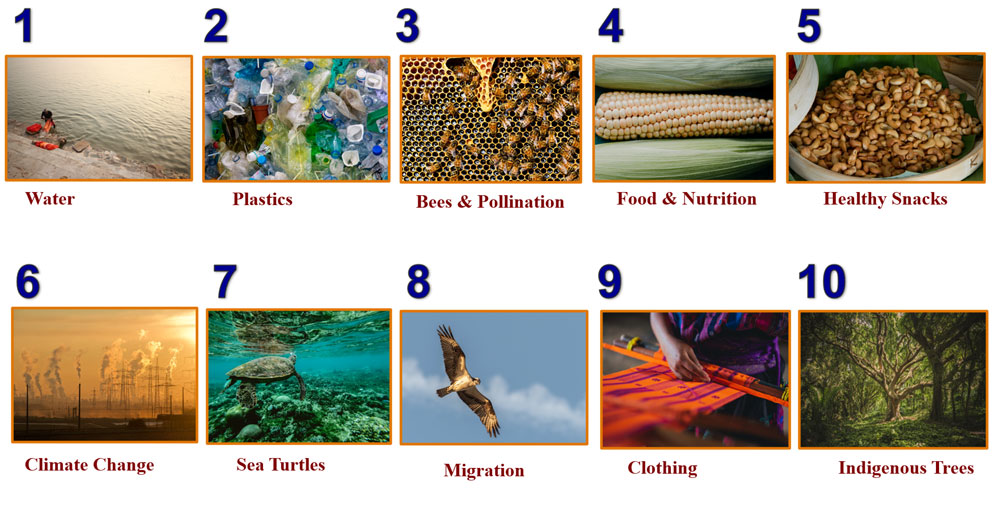Summary of thematic exemplar ideas for inclusion of ESD in school subjects
A set of 10 thumbnails have been created for the use for teachers of primary and middle schools. Thumbnails are a summary of the exemplars and helps teachers understand the various components of each exemplar. The exemplars and thumbnails are only starting points for teachers to begin conversations/discussions in classrooms about a particular topic.

To further enhance classroom discussions around that topic, teachers can include other point of views and interesting real-life stories (local or global) at the learners’ level (age and grade appropriate). While introducing new stories, it is important that the stories are stimulating, connecting learning processes with reality, that they support and activate a dialogic open narrative process and deeper communication. The children react to the story, they share their stories, ask questions, they share their own experiences that are similar or quite different from those in the story.
This story sharing serves to locate and invite the plural inclusion of social, heritage / historiographic dimensions, and to revisit what is already known to build “common knowledge” or to recognize a gap in the knowledge. Local indigenous stories can stimulate the development of higher order thinking such as making comparisons and understanding the concepts of change and continuity that have occurred over time.
Following the start-up stories are various activities given to students to undertake local-inquiry work. These activities include solving eco-puzzles, conducting surveys/interviews in their immediate surroundings, going on a field visit, etc. Teachers can modify these tasks and include additional information based on the age and grade of the students. Following this is the design challenge where students review, analyze and design sustainable solutions. Finally, the students are given an opportunity to apply their learning, understanding practical ground realities and take Handprint actions.
These resources can also be shared with other teachers from your schools/other schools and collaborate as a community to start thinking and taking Handprint actions for the common good.